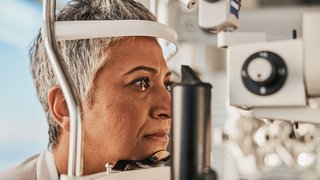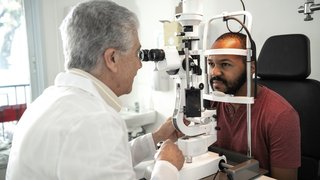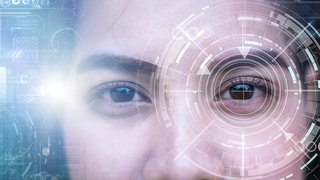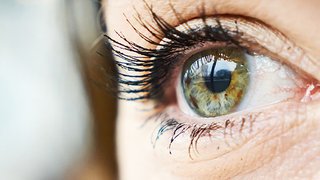AI and virtual reality: The future of cataract surgery has arrived
July 17, 2019

Artificial intelligence (AI or machine learning) and virtual reality (VR) are changing traditional approaches to cataract surgery, particularly for patients who have had LASIK and other cornea surgeries in the past.
We used to have to rely on general measurement guidelines and static images of a patient’s eye to remove cataracts and repair the cornea – the transparent layer covering the front of the eye. Today, AI and VR offer eye surgeons more precise information to recommend and perform procedures.
Using proprietary software and a catalog of anonymized and secure patient data, AI algorithms help our doctors recommend treatment options with more confidence and give us more accurate cornea measurements. Virtual reality provides enhanced surgical visualization that will one day help improve patient outcomes.
We’ve outlined four AI and VR technologies that UT Southwestern cataract surgeons are using today.
1. Accurate measurements after LASIK
Before having cataract surgery, we take preoperative measurements of the center of the cornea to determine against published data the patient’s corneal strength. In patients with a history of LASIK or other eye surgeries, these estimates are not completely accurate because their corneas usually are shaped differently. As such, sometimes these patients get new lenses after cataract surgery that are not strong enough, and revisional surgery is needed.
However, we use Optiwave Refractive Analysis (ORA), a machine that incorporates AI and real-time measurements, to give a more accurate assessment of the strength of the cornea. ORA provides data readings that are matched against an algorithm to give patients more accurate results with the initial lens placement. It’s like a validation or double-check of the standard of care.
“We used to have to rely on general measurement guidelines and static images of a patient’s eye to remove cataracts and repair the cornea – the transparent layer covering the front of the eye. Today, AI and VR offer eye surgeons more precise information to recommend and perform procedures.”
Jeremy Bartley, M.D.
2. Intraoperative OCT
Ocular coherence tomography (OCT) gives eye surgeons a 3-D view of the eye during cataract surgery and corneal transplantation. We can examine the layers of the cornea on a screen while operating, which helps us ensure that we remove as much unhealthy tissue as possible and that we properly align transplanted healthy tissue or a new lens in the eye.
Related reading: Not your grandparents’ cataract surgery: Smoother recovery, better results
3. VerionTM System
For cataract procedures, we used to have to rely on a patient’s reflex reactions to light to center incisions and the new lens on the eye. But today, we can use the Verion System to take images of the eye before cataract surgery to make sure the new lens lines up properly. We also use this sophisticated machine to precisely line up incisions in the cornea during laser surgery, improving patient outcomes.
4. Virtual reality surgery
This technology is something we hope to use regularly in the near future. We are testing a 4K virtual reality surgery system that gives us 3D images of the eye during cataract surgery.
The surgeon wears a pair of 3D glasses, similar to the style movie-goers wear to the cinema. We can see the eye in 3D on a large screen, which allows the surgeon more mobility, better focus, and improved depth of vision to perform cataract surgery. Data indicate that the 4K system delivers comparable patient outcomes to traditional surgery – but with less neck and back strain for the surgeon, who would no longer have to operate while holding his or her head in a fixed position.
Patients with cataracts can benefit from AI and the other technological advancements we noted in more than just precise outcomes. We want our patients to feel secure and know that data-driven technology, paired with patient-specific data, will lead to more accurate surgical outcomes.
360-degree eye care
The ophthalmology team at UT Southwestern provides comprehensive eye care for everything from retinal and corneal conditions to cataracts and macular degeneration. The team uses the latest technology to provide the care tailored to each patient. "There's nothing that comes in our door that we can't take care of," says James P. McCulley, M.D., Chair of the Department of Ophthalmology.
To find out whether you or a loved one might benefit from AI-assisted cataract surgery, call 214-645-2020 or request an appointment online.












